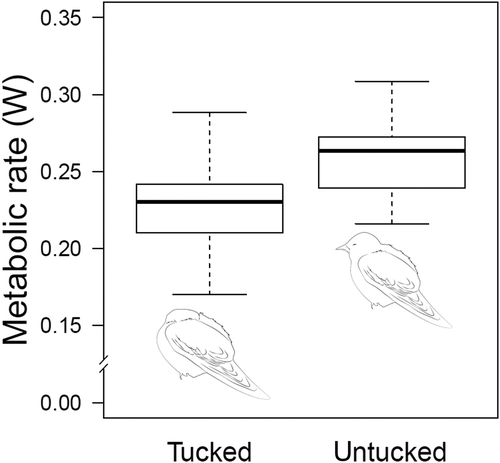Figures & data
Fig. 1. Rates of energy accumulation of migrating songbirds that spent at least 1 day on Ponza. Rates of energy accumulation (presented as “Boxplots”) were calculated based on bird’s body mass at last capture subtracted from body mass at first capture relative to lean body mass and time spent at the stopover site. To improve accuracy of this measurement, we used the number of hours between the first and the last capture as “time of permanence”. Lean body mass was estimated following Kelsey et al. (Citation2019). Data from Maggini et al. (Citation2020)

Fig. 2. Energy consumption in sleeping Garden warblers. Energy consumption decreases by almost 14% when birds tuck their head in. If we consider that Garden warblers on Ponza spend 62% of the night sleeping (i.e. 5 hr between 20:00 and 4:00; Ferretti et al. Citation2020b), this species can save approximately 0.68 kJ/night by spending the whole night tucked in. This amount of energy corresponds to 0.02 g of fat (considering the energy equivalent of fat as 37.6 kJ/g; Jenni & Jenni-Eiermann Citation1998). Redrawn from Ferretti et al. (Citation2019b)

